Name Keiichi Tanaami Role Artist | Movies 10 Nights' Dreams, Dreams | |
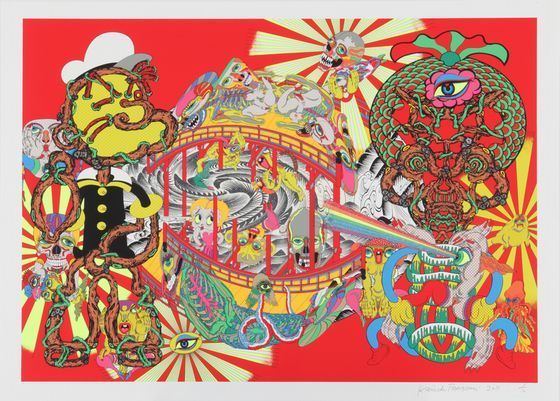 | ||
Books Blow Up 2, Kamon, Spiral, Layers of Keiichi Tanaami, BLOW UP: Keiichi Tanaami | ||
Education Musashino Art University Similar Kotobuki Shiriagari, Toshio Iwai, Tabaimo | ||
"Adventures in Beauty Wonderland" by Keiichi Tanaami
Keiichi Tanaami (田名網 敬一, Tanaami Keiichi, born in 1936 in Tokyo) is one of the leading pop artists of postwar Japan, and has been active as multi-genre artist since the 1960s as a graphic designer, illustrator, video artist and fine artist.
Contents
- Adventures in Beauty Wonderland by Keiichi Tanaami
- Conversations artist talk keiichi tanaami
- Biography
- Solo exhibitions
- Editorial DesignArt Direction
- DVD
- Film works
- Animation Works
- References

Conversations artist talk keiichi tanaami
Biography
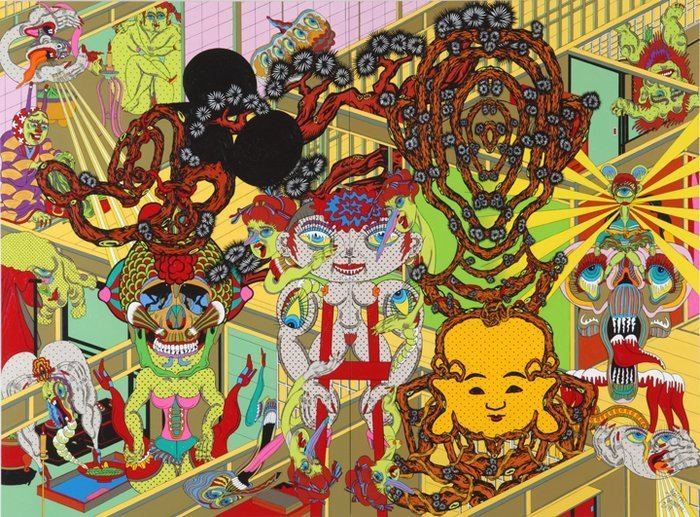
Keiichi Tanaami was born in 1936 as the eldest son of a textile wholesaler in Tokyo. He was 9 years old when Tokyo was bombed during the Great Tokyo Air Raid of World War II in 1945. Images seared into the back of his mind at this time would become major motifs in his art works: roaring American bombers, searchlights scanning the skies, firebombs dropped from planes, the city a sea of fire, fleeing masses, and his father’s deformed goldfish swimming in its tank, flashes from the bombs reflecting in the water.
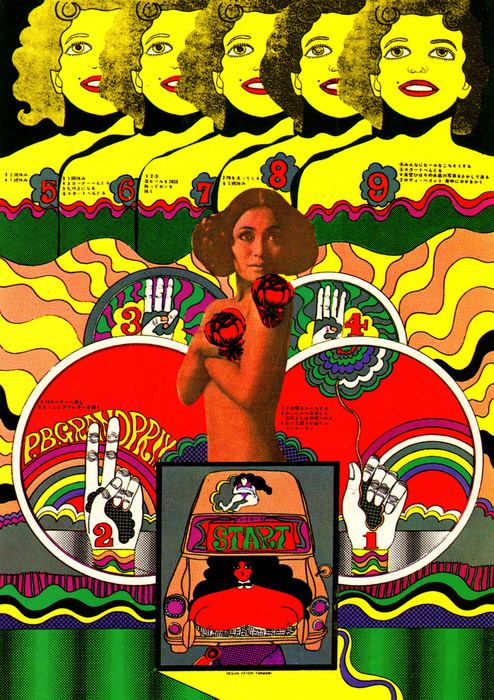
“I was rushed away from my childhood, a time that should be filled with eating and playing, by the enigmatic monstrosity of war; my dreams were a vortex of fear and anxiety, anger and resignation. On the night of the air raid, I remember watching swarms of people flee from bald mountaintops. But then something occurs to me: was that moment real? Dream and reality are all mixed up in my memories, recorded permanently in this ambiguous way.”
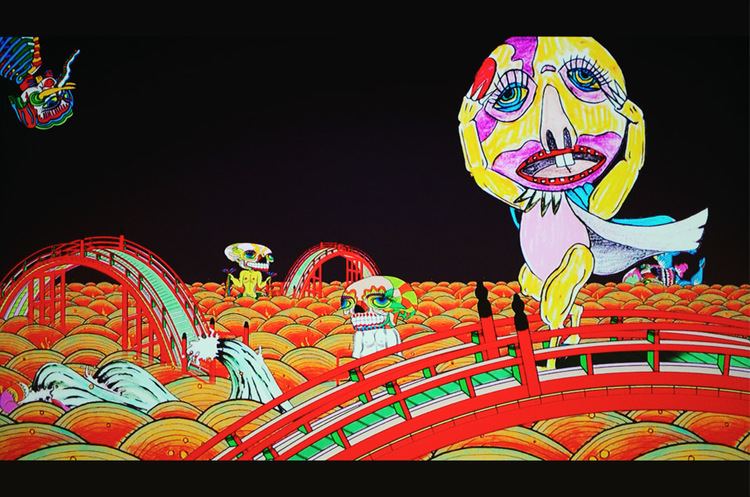
Tanaami took to drawing from a young age, and as a junior high school student he often spent time at the studio of leading postwar cartoonist Kazushi Hara with the intention of becoming a cartoonist himself. After Hara’s sudden death, however, he turned to the pioneering field within manga of graphic novels, and went on to study to become a professional artist at Musashino Art University. Word of his talent spread quickly during his time there and in 1958, as a second year student, he was awarded the Special Selection at an exhibition held by the authoritative illustration and design group of the time. After graduating he took a job with an advertising agency, but quit before one year was up due to the numerous private commissions he was receiving. During the ‘60s he busied himself as a successful illustrator and graphic designer while also actively participating in the Neo-Dada organization, one of the defining art movements of postwar Japan. In the latter half of the ‘60s he immersed himself in making video art, the newest medium in the art scene at the time.
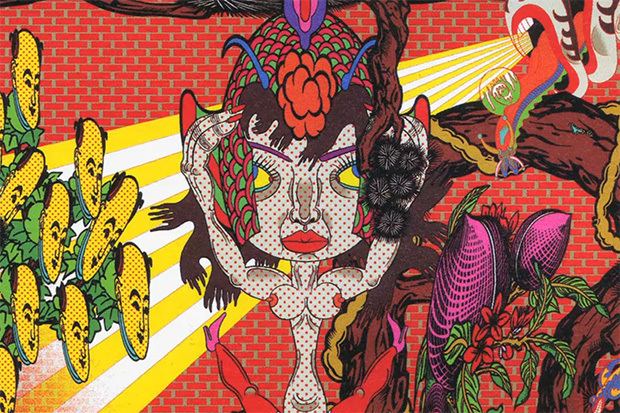
“In the 1960s, the Sogetsu Art Center in Akasaka regularly held events that traversed many diverse genres. There were happenings staged by Yoko Ono, videos by Nam June Paik and experimental films from America. It was around that time that I heard about the [Sogetsu] Animation Festival (1965). I wanted so badly to make an animation, so I convinced Yōji Kuri’s Experimental Animation Studio to help me create ‘Marionettes in Masks’ (35 mm, 8 minutes). I continued to make animations after that, with works such as ‘Good-by Marilyn’ (1971), ‘Good-by Elvis and USA’ (1971), ‘Crayon Angel’ (1975) and ‘Sweet Friday’ (1975).”
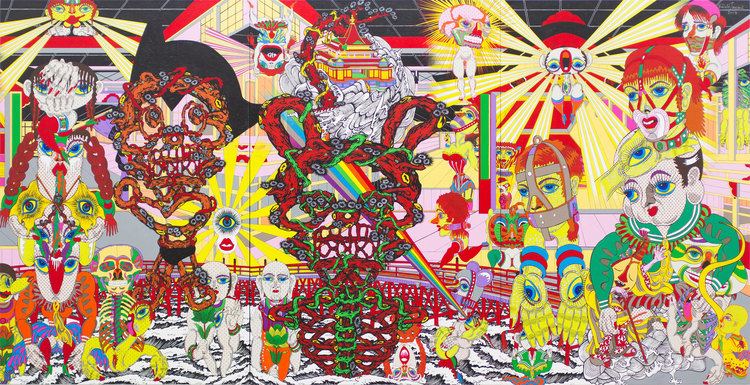
In 1967, Tanaami took his first trip to New York City. There he came face to face with the works of Andy Warhol, shining brightly amidst the whirlwind of prospering American consumerism, and Tanaami was struck by the new possibilities of art within the world of design.
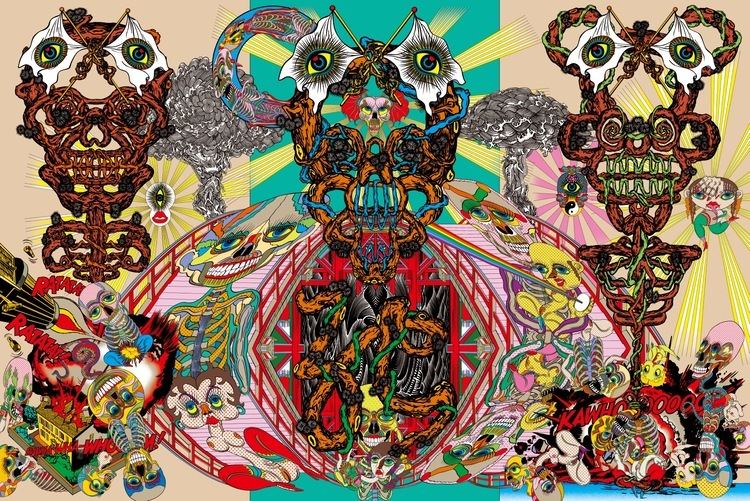
“Warhol was in the process of shifting from commercial illustrator to artist, and I both witnessed and experienced firsthand his tactics, his method of incision into the art world. His strategies were identical to the strategies employed by advertising agencies. He used contemporary icons as motifs in his works and for his other activities put together media such as films, newspapers and rock bands. In other words, Warhol’s sole existence was selling his works to the art market. I was shocked by this, and at the same time I embraced him as the perfect role model for myself. Like Warhol, I decided not to limit myself to one medium, to fine art or design only, but instead to explore many different methods.”

At the height of psychedelic culture and pop art, Tanaami’s kitschy, colorful illustrations and design work received high acclaim in both Japan and abroad. “NO MORE WAR”, his prize-winning piece from the 1968 antiwar poster contest organized by AVANT-GARDE Magazine, in addition to his album cover art for legendary bands The Monkees and Jefferson Airplane and other such works left a major footprint on the path to introducing psychedelic and pop art to Japan. Furthermore, his series of erotic paintings featuring Hollywood actresses done in the early ‘70s became an important body of work that declared Tanaami as the Japanese artist with a witty eye on American culture.
In 1975, Tanaami became the first art director of the Japanese edition of Playboy, Monthly Playboy, and went to New York once again to visit Playboy’s head office. The editor there took him to Andy Warhol’s Factory. Tanaami’s works from this period, mostly in the mediums of film and print, were provocative and experimental. His films in particular received wide critical acclaim, appearing in the International Short Film Festival Oberhausen in Germany (1975, 1976), the New York Film Festival (1976), and the Ottawa International Animation Festival in Canada (1976). The vanguard nature of his work led the police to shut down his 1976 exhibit “Super Orange of Love” at Nishimura Gallery for inspection on the opening day.
In 1981, at the age of 45, he suffered a pulmonary edema and for a time hovered at the edge of life and death. Throughout the ‘80s and ‘90s, Tanaami created many works centered around the theme of “Life and Death” based on the experience. For example, the pine tree form that appears frequently in Tanaami’s works comes from a hallucination he experienced during his illness. Similarly, the cranes, elephants and naked women that appear along with spirals and miniature garden-like architectural forms are characteristic of his works from this period.
In 1999, a retrospective of Tanaami’s works from the ‘60s was held at Gallery 360° in Tokyo. The exhibit was praised highly by Yamataka Eye (Boredoms) and KAWS, cultural leaders of the new generation born after the ‘60s, and as a result, Tanaami’s works once again became popular amongst youth culture. Since 2005, Tanaami has been presenting new works that fall in the realm of fine art. In these works, he continues to manifest images from his personal memories and from his dream world -- personified goldfish, deformed characters, rays of light, helical pine trees, fantastical architecture, young girls -- through the various mediums of painting, sculpture, film and furniture.
Tanaami has worked as a professor at Kyoto University of Art and Design since 1991, where he has helped bring up young new artists such as Tabaimo. Recent exhibits include “Day Tripper” at Art & Public in Geneva (2007), “SPIRAL” at Galerie Gebr. Lehmann in Berlin (2008), “Kochuten” at NANZUKA UNDERGROUND (2009), “Still in Dream” at Frieze Art Fair (2010) and “No More War” at Art 42 Basel (2011).
